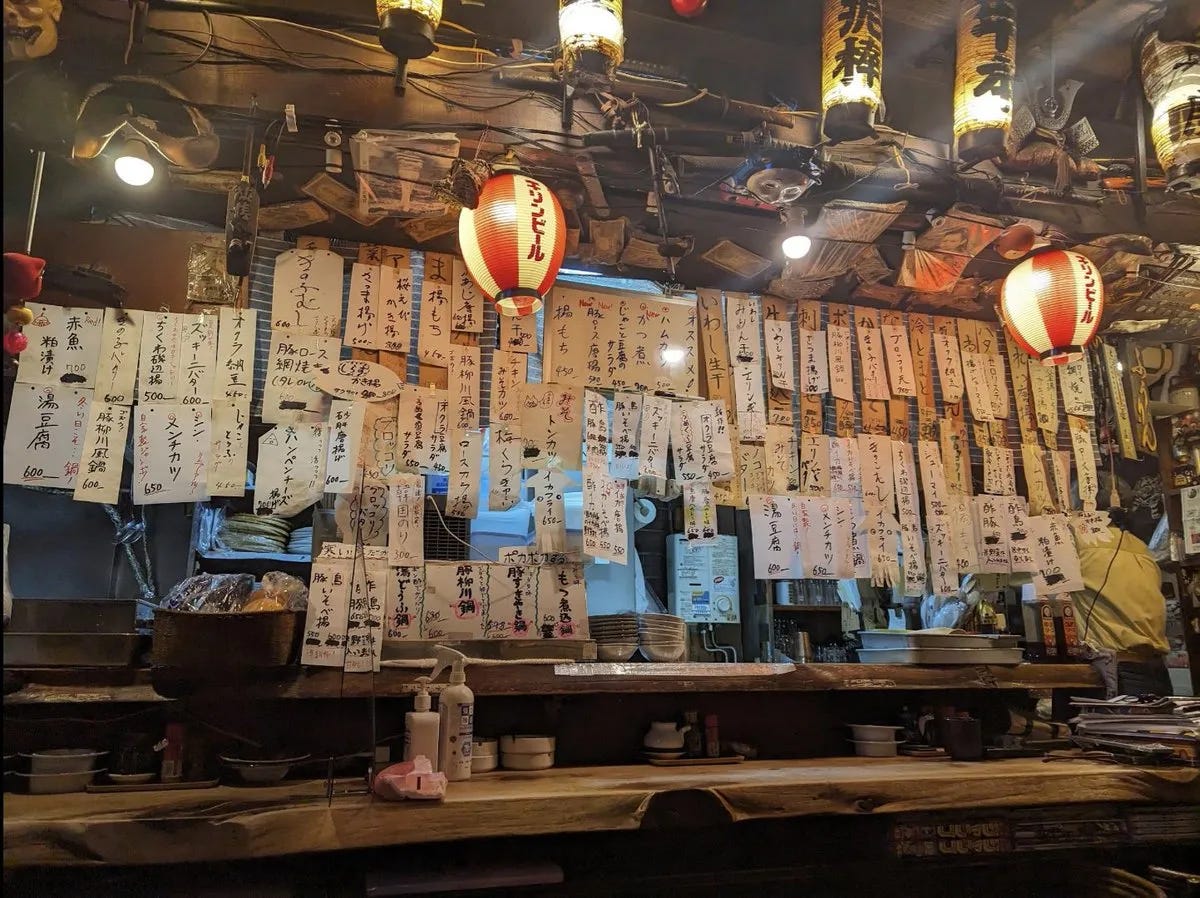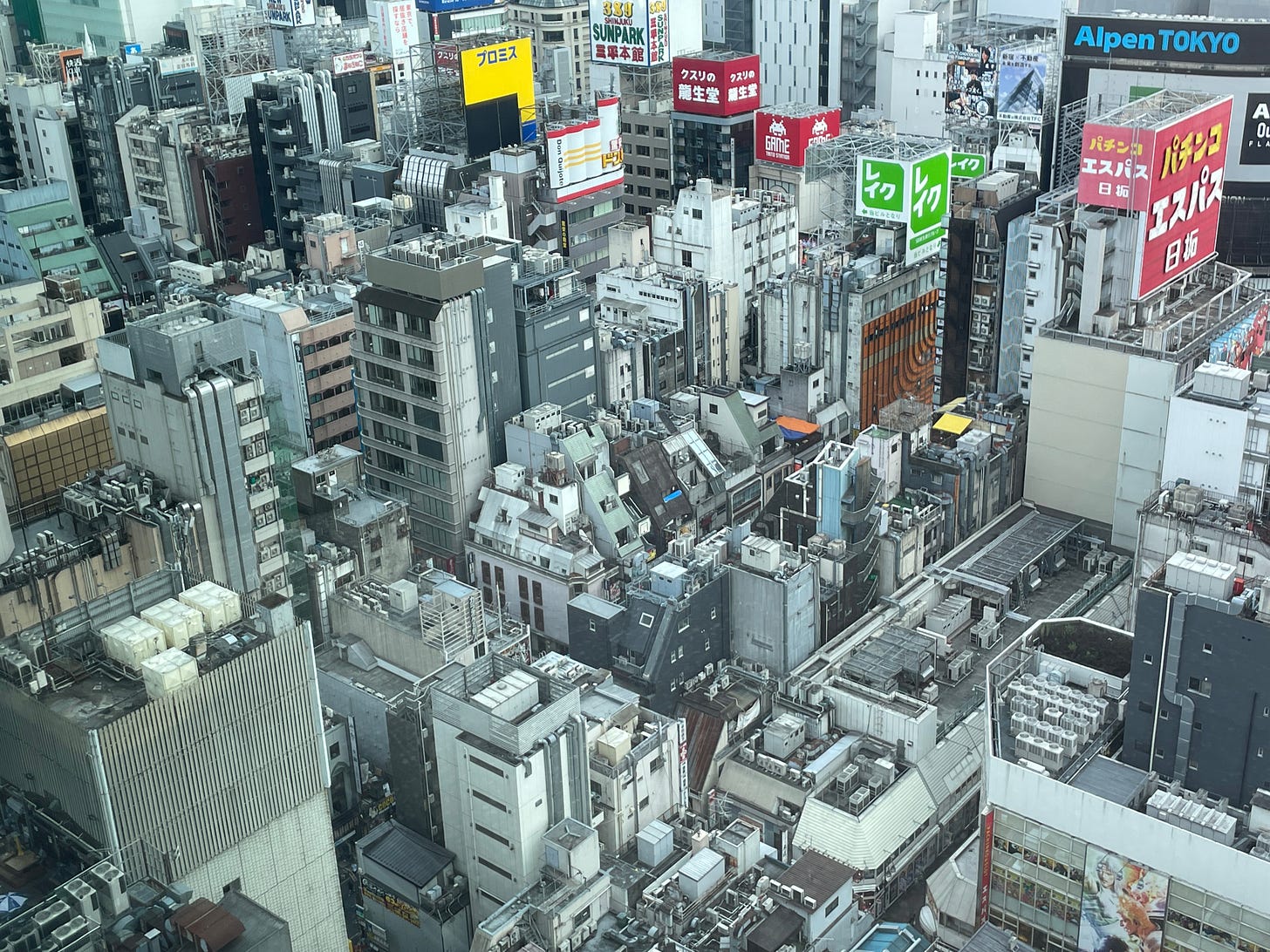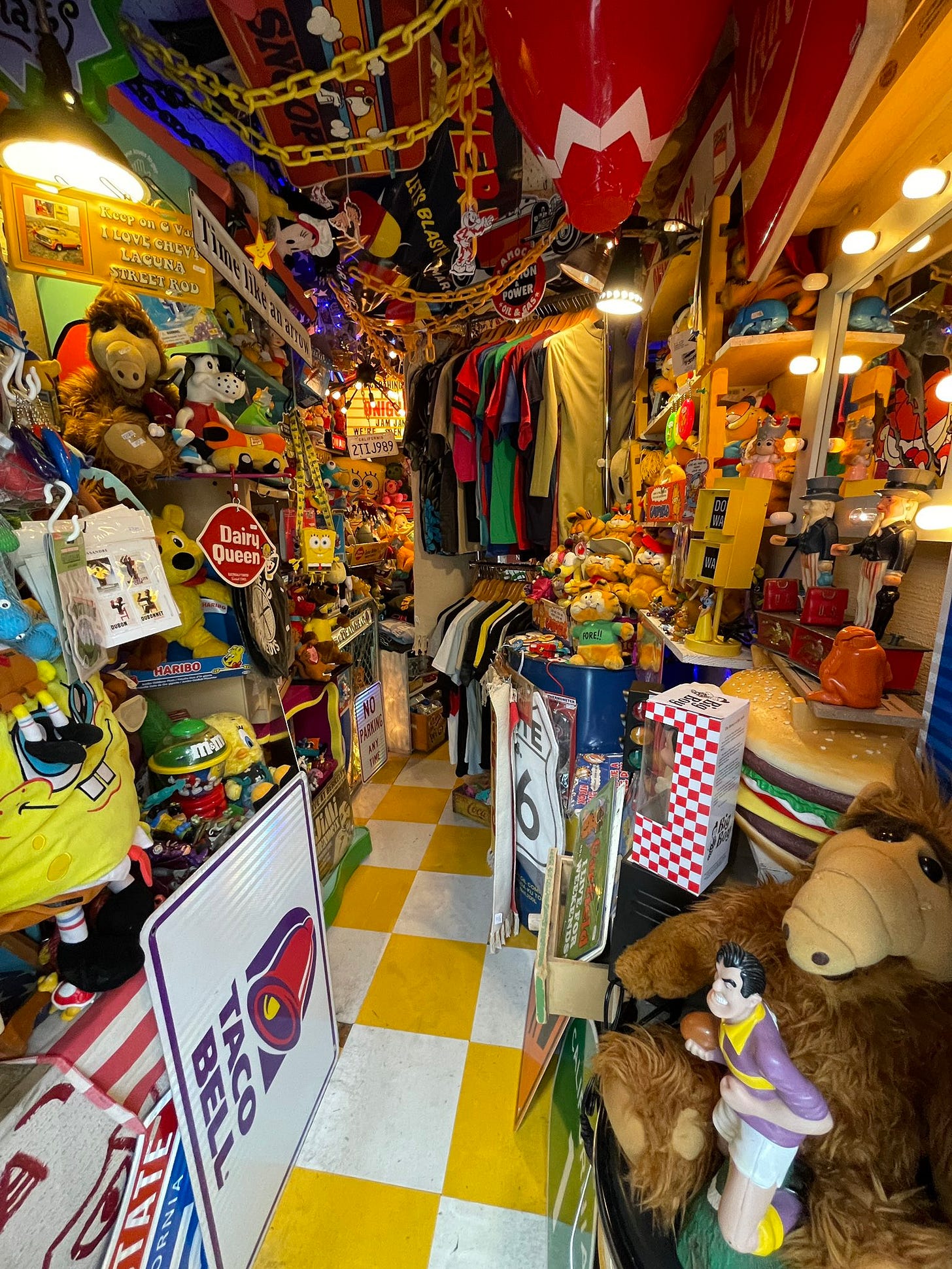Marie Kondon't
Nobody curates clutter like the Japanese. I wrote about it for Aeon magazine.
First of all, a big welcome to those of you who found you way here from Aeon magazine, where my latest essay, The joy of Japanese clutter, went up last week. As a longtime fan of Kyoichi Tsuzki’s Tokyo Style, it was great to get to talk with him, and Lee Chapman’s photography is an amazing complement to the story. And in keeping with the title, it was a joy to dive in to the seeming flip side of tidying magic and minimalism along with my editor Cameron McKean. I say “seeming” flip side because, as you’ll read in the essay, I don’t see clutter and clean as necessarily opposed. In fact, I think they make one another. But no spoilers! Please go and have a read.
In the meantime, I will be honest: I never really understood the fascination with Japan’s minimalist side. Perhaps this is because of the time I spent in the country from a relatively young age. I first visited Japan in 1989, as a high school student, at the peak of the nation’s famed economic bubble. Japan was rich. And people’s lives were absolutely filled with stuff.
On that visit, I spent several weeks home-staying with families in Kanagawa prefecture, and I was amazed by the sheer amount of things people owned. The kids’ rooms were crammed wall to wall with bookshelves and boxes, desks topped by all sorts of school gear from Japan’s legendarily overstuffed stationery stores, and the inevitable gadgets, personal computers and Walkmans and GameBoys and mini-sized televisions and all the rest. Downstairs, the family rooms were ringed by shelves and showcases filled with ceramicware and knick-knacks, and we’d we’d sing karaoke on expensive-looking stereo systems after family dinners on weekends. These living spaces were linked by hallways that often accumulated piles of books or boxes as well. Yet nothing was dirty; everything was in fact spotless, without a hint of dust or grime.
Some of this was due to the smaller footprint of the average Japanese home as compared to the McMansions in the affluent American suburb where I grew up. But a bigger reason that Japanese homes accumulate clutter, I think, is because personal living spaces aren’t generally opened to guests. In urban areas, where space is at a premium, people tend to gather outside of their homes, which is why Tokyo and other major cities have so many coffee shops and izakaya and places to meet. Even out in the countryside, where homes tend to be more spacious, there are generally special rooms set aside for entertaining, rather than giving visitors the run of the house.
Perhaps because of these formative experiences, I find myself drawn to places in Japan that exemplify the exact opposite of austere minimalism. Packed with stuff, but chosen carefully, with an emphasis not on simplicity but personality. Not all are homes. Some are boutiques. Some are restaurants or bars. Others are places of work. And all of them make me think that the world has been missing the point all along. Japan’s cluttered spaces are among its most dynamic and fun. They are where the most interesting things happen.
There is a method to the madness of the best clutter-spaces in Japan. Their jumble of stuff is the byproduct of taste and time, accruing and overlaying as the spaces are lived in and used. Minimalist spaces tend to resemble one another; each clutter-space is cluttered in its own peculiar way. They exude warmth and coziness and welcome, traits that minimalist spaces almost by definition lack.
“It all goes back to a core question: how do you make a place feel like a Place, and not a bland modernity that's just everywhere and nowhere at the same time?” Joe McReynolds, co-author of the beautiful Emergent Tokyo: Designing the Spontaneous City, told me. “Clutter is real. Clutter is personal. Clutter is fallibility and vulnerability, and those are the two essential components of intimacy. We can't be intimate with perfection.”
Yet the world seems to worship this perfectionist side of Japan, whether in a spiritual, artistic, or even retail context. And that’s fine — I enjoy those kinds of places too. But I see them as a form of virtual reality, carefully curated to evoke an ideal. What I’m saying is that cluttered spaces can evoke ideals in their own rights, as much as any temple’s rock garden, as much as any tea-ceremony space. You just have to look at them with the right eyes. Truly, it’s woven into the very fabric of Tokyo.
I am biased. Stuff from Japan, in the form of toys and games and cartoons and comics, sparked my interest in the country as a child. That is the norm among young people now, raised as so many were on Pokémon and Digimon, manga and anime. But forty or more years ago, before the advent of streaming services, the internet, or even widespread cable television, an interest in Japanese things made me an outlier. And it still kind of does today. For the world isn’t interested in things from Japan anymore, so much as it is content from Japan: games, manga, anime, and life-changing cleaning magic among it all.
But not me. I wanted stuff — stuff I could hold and touch and examine. Toys and models and gadgets and anything and everything else. A hunger for more from Japan spurred me to study the language seriously, and eventually move to Tokyo, where I’ve lived and worked for the last two decades. In ways large and small I owe my life in its current form to stuff from Japan.
As more and more of our lives takes place online, our relationship with the physical world, and the things we own, has subtly changed. Japan, which reckoned with the issues of becoming a post-industrial society ahead of the West, was one of the first advanced nations to start seriously reappraising its posessions. Which is why the world turns to a cleaning guru named Marie Kondo instead of, say, Mary Smith. Even still, it’s hard for me to imagine Japan without all its stuff — which is exactly why I wanted to write this essay. Clutter done right, which is to say cozy clutter, isn’t a detriment to happiness or something to be swept under the rug. It’s something to be celebrated!
Incidentally, I only just learned that Mr. Shimayama, whose smiling face within his Akihbara electronics stall adorns the top of the Aeon article, retired several years back. His gloriously cramped little booth closed down —and was purchased by a YouTuber named Norm Nakamura, who painstakingly reassembled it in his studio to preserve it. I love clutter, but this is dedication on an altogether different level. You might even call it clutter conservation!
Had I the space I’d love to do the same for this old neighborhood toy store that Lee so evocatively shot, a vision of childhood pleasures beckoning in the gloaming, like something I’d see in dream — like the one that beckoned me to Japan, all those years ago.







Great article. There is a distribution to everything, and preferences along every point of the curve. We forget that cultural attributes, idealized and exported, are just part of that distribution between minimalism and maximalism.
In the de-cluttering discussion, wasn't there also a practical issue historically like represented in the book Shogun (I've not watched the series) about earthquakes, typhoons and fire - if a house was simple, not much would be destroyed when calamity came, and it could easily be re-built and refurnished ?